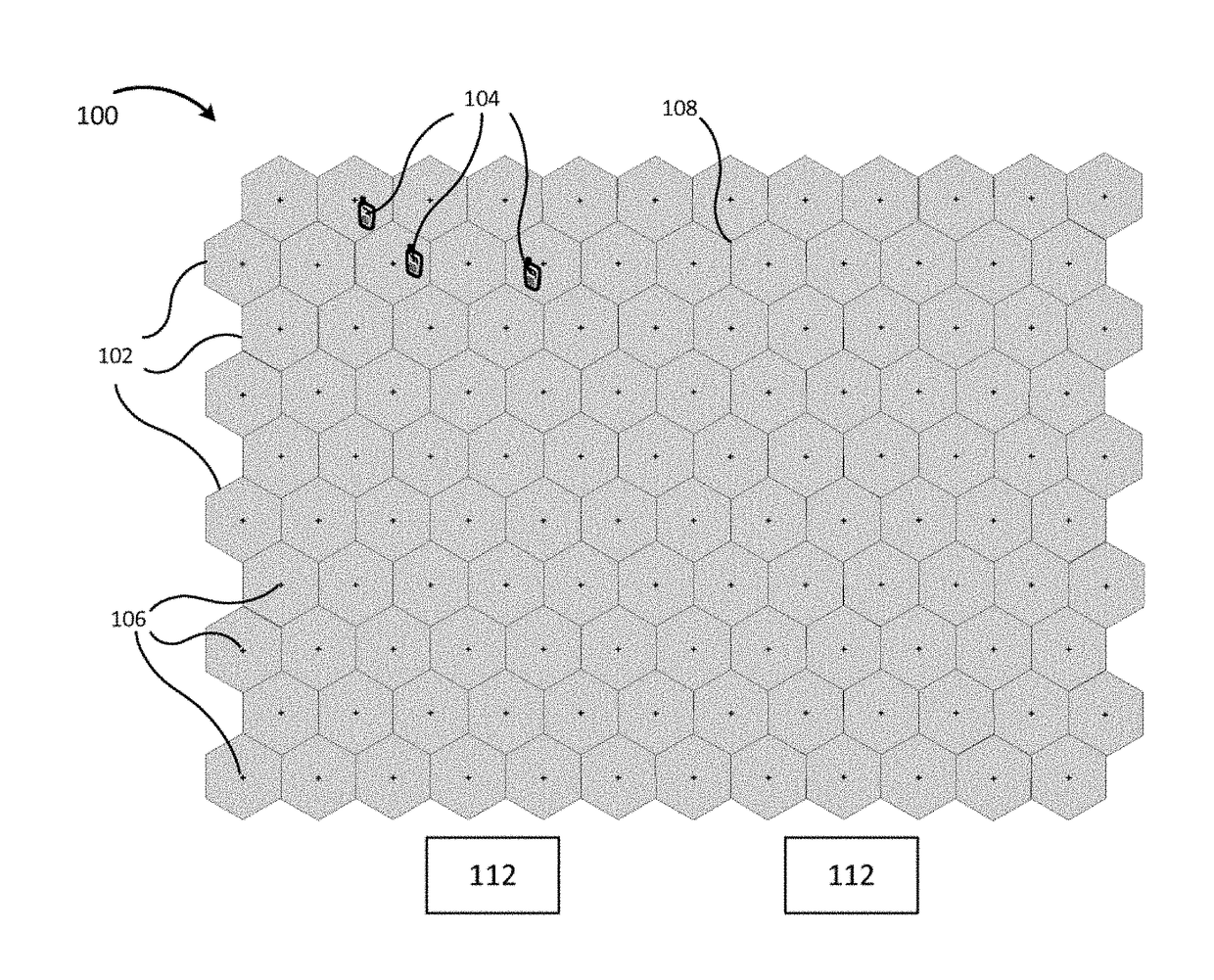Method and apparatus for shifting control areas in a wireless communication system
a wireless communication system and control area technology, applied in the direction of site diversity, location information based service, diversity/multi-antenna system, etc., can solve the problems of limited computational resources available for scheduling in any given control area, increased backhaul requirements, and low level of service, so as to improve the performance of wireless communication
- Summary
- Abstract
- Description
- Claims
- Application Information
AI Technical Summary
Benefits of technology
Problems solved by technology
Method used
Image
Examples
Embodiment Construction
[0049]Referring now to FIG. 1 there can be seen an illustration of a service area 100 of a communication network appropriate for practicing embodiments of the present disclosure. For the purposes of the disclosure herein, the communication network will generally be referred to as a wireless communication network.
[0050]The service area 100 is depicted in FIG. 1 using a conventional honeycomb configuration of hexagonally shaped cells 102. Each individual cell, such as cell 102, represents the coverage area of one access node 106, generally represented as a cross at the approximate center of each cell 102. Alternatively the antennas of three access nodes may be placed at the intersection of three cells 108 in order to reduce the number of towers and other physical equipment needed. The antennas and physical layer of each access node 106 may be placed anywhere within or outside the cell 102 as necessary to provide the desired signal quality throughout a cell 102.
[0051]A plurality of reg...
PUM
 Login to View More
Login to View More Abstract
Description
Claims
Application Information
 Login to View More
Login to View More - R&D
- Intellectual Property
- Life Sciences
- Materials
- Tech Scout
- Unparalleled Data Quality
- Higher Quality Content
- 60% Fewer Hallucinations
Browse by: Latest US Patents, China's latest patents, Technical Efficacy Thesaurus, Application Domain, Technology Topic, Popular Technical Reports.
© 2025 PatSnap. All rights reserved.Legal|Privacy policy|Modern Slavery Act Transparency Statement|Sitemap|About US| Contact US: help@patsnap.com



